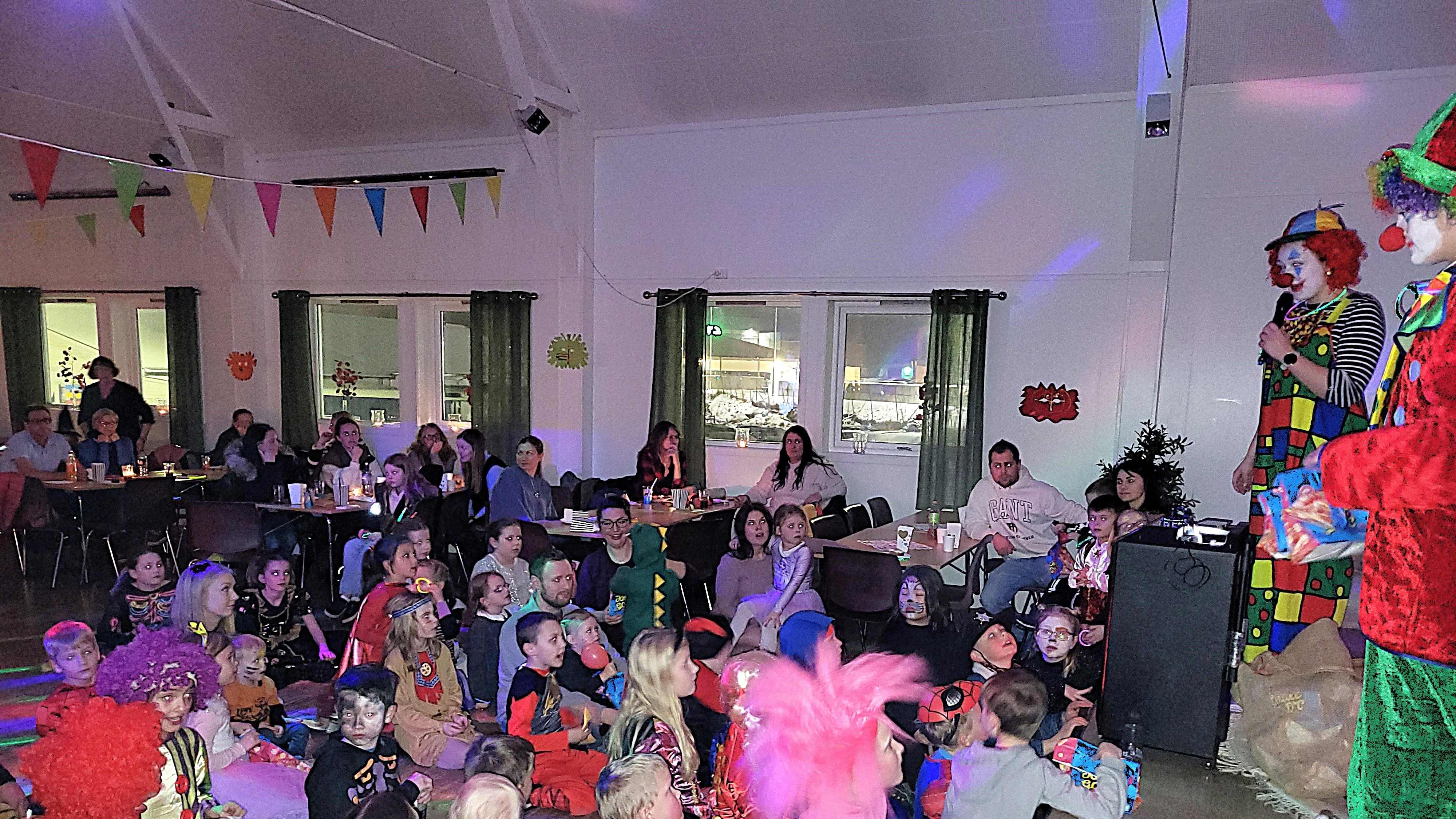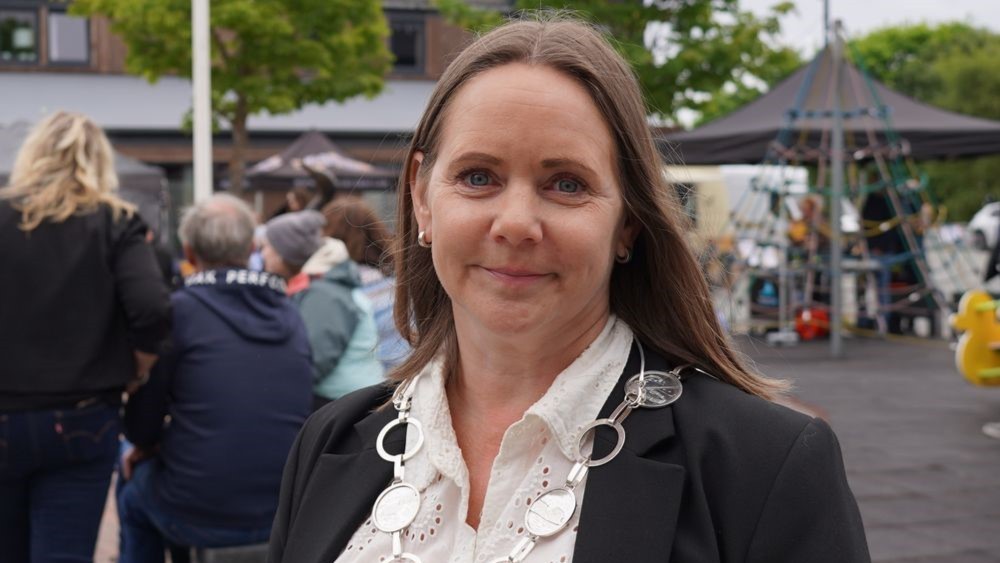The salmon millions keeping a small Norwegian island society alive
Millions of kroner from the fish farming sector contribute to the community and activities in Frøya – from carnival and language cafés to the downpayment of municipal debts. But with most eggs in one basket, the municipality is vulnerable.
The aquaculture and fisheries municipality Frøya is made up of several inhabited islands and counts a total of 5,600 inhabitants. Most live in hamlets on the main island, a few hours' drive from Norway’s third city, Trondheim.
The municipality’s population grew by 22 per cent between 2010 and 2022, while the figure for Trøndelag County as a whole was 11.4 per cent.
Aquaculture employs a lot of people in Frøya.
The Aquaculture Fund is a Norwegian state fund that generates revenue from production fees, sales, and auctions related to fish farming in the country. It was established by the parliament in 2015.
In 2024, the fund paid out more than 3.7 billion Norwegian kroner (€326m) to municipalities and county authorities involved in fish farming. Frøya municipality received 153.1 million kroner (€13.5m) last year.
Clown parties
Treasure hunts, costumes and music often turn gatherings of young people and adults upside down during popular shows in the community halls.
Anne Sofie Kristoffersen is the leader of Flatval community association. She says the money allocated to the municipality from the Aquaculture Fund is of great value to the people in the hamlets.

Full house with children in fancy dress and clowns when there is a party in the community hall.
“Having the community hall as a hub means a lot. It is our local meeting place. The money from the municipality has made it possible for us to renovate the house properly, which has given young and old a place we can be proud of,” she says about the Svanheim community hall.
The money goes on buying new games and other equipment used by adults and children during the events which often draw full houses. The community halls are used for bazaars, parties, revue theatre, flea markets, bingo and dancing.
Strengthening the community
The Frøya locals have 23 community associations and welfare organisations with high activity levels.
“Economic support has created an even more vibrant and including meeting place. We see how much the improvements mean to the local society. We feel that the municipality really sees the value in local engagement and that the economic support helps strengthen our community,” says Kristoffersen.
She believes the entire island society benefits from the Aquaculture Fund.
“The Husvatnet bathing area is another proof of this, which fills up with happy swimmers from May until August,” says Kristoffersen.
An important meeting place
Frøya is Norway’s largest salmon-farming municipality. 28 per cent of residents are families of labour immigrants working in the salmon industry. Most come from Eastern Europe and live on the 152 square kilometre main island.
Husband and wife Stian Pachov and Milena Pachova are active in the community association and Norwegian People’s Aid through the language café. They use several of the community halls.
“We apply for funding for the activities and the community association. Selling lottery tickets won’t cover the cost of hiring an electrician or other maintenance tasks. There are many visitors to our events too, because Frøya has more than 1,000 holiday homes,” says Milena Pachova.
She is active in local politics together with her husband. He is also a union representative at the cornerstone company, Salmar AS’ salmon processing plant, and the local LO leader.
Pachova highlights the importance of having social meeting places for the hamlets.
“There are no ordinary cafés outside of Frøya’s Sistranda centre. The village halls host weddings, birthdays and confirmations,” she says. Her day job is working with adult education for the municipality.
Film award
Frøya was recently awarded the prestigious prize for Europe’s best film location during the Berlin Film Festival. This was partly thanks to the Netflix series “Billionaire Island” which has made Frøya famous.
The series describes the conflict arising from the fight for shares in the industry on a small island, and the environmental impact of fish farming is also a theme. It was filmed at several locations on Frøya.
Around half of the actors in the fictional series are from Frøya. Several of the local actors have a background from the community hall stages.
Enough to spend your money on
Mayor Kristin Strømskag (Conservatives) is proud that Frøya is Norway’s largest aquaculture municipality.

Kristin Strømskag is Frøya municipality's proud major.
“We have had to expand and renovate kindergartens and schools which means the municipality’s debt burden is high. 60 to 70 per cent of the money from the Aquaculture Fund is spent on savings or downpayments to help create a healthier economy for the municipality. The money from the Aquaculture Fund provides investment opportunities,” points out Strømskag.
The money also benefits youths and businesses on Frøya.
“The aquaculture sector uses areas and resources that belong to the people, so it is important that money from the Fund goes directly to the inhabitants,” says Strømskag.
Several of the Frøya fish farming billionaires have moved to Switzerland.
What will Frøya do if more salmon billionaires move to tax havens?
“Personal wealth used to make up a large proportion of the municipality’s income. Last year, the government reformed the tax system and a substantially smaller share now goes to the municipalities.
“Most goes to the state, which means the economic impact on municipalities when someone moves is less significant. But Frøya is still undergoing a challenging transition after the reform,” the mayor admits.
Single-industry job market
The Confederation of Norwegian Enterprise (NJO) ranges Norwegian municipalities in a “municipal championship”. In 2024, Frøya came 66th out of 356 municipalities.
“We rank that low because 1,750 of the municipality’s 5,600 residents work directly or indirectly in aquaculture. Frøya does not have many other industries to rely on if something were to happen to this sector.”
Salmar employs around double the number of people the municipality does, explains the mayor.
“It is unusual for a district municipality like us to have one employer with more staff than the municipal administration,” says Strømskag.
Choosing fish over municipality
Frøya municipality sometimes struggles to recruit people. Many would rather make more money working in the salmon industry than in education and healthcare on lower municipal salaries.
A weak krone and improving living conditions in Eastern Europe also create challenges for recruitment to Frøya.
At times, the kindergarten has had to close for parts of the day because of a lack of staff. Two private kindergartens were recently bought by the municipality so they could continue to operate.
The municipality has managed to a certain extent to attract new staff for vacant positions using bonuses, explains mayor Kristin Strømskag.
- A communal hub
-
Milena Pachova and Stian Pachov have hosted several language cafés and created good social gatherings at Titran community hall.
 Follow us on Facebook
Follow us on Facebook
